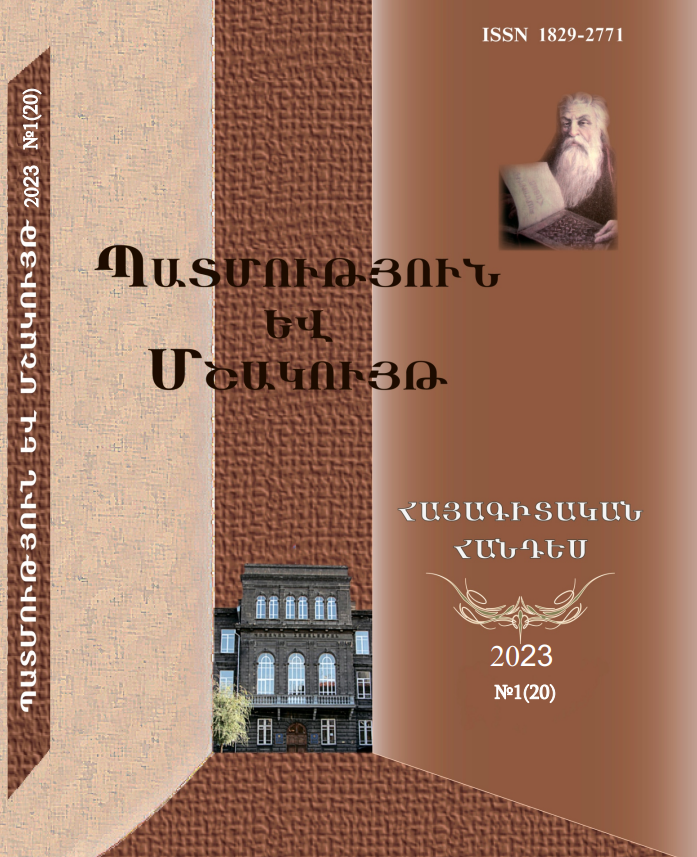The activities and the transformation process of the Parliament of Armenia in the first years of Independence
DOI:
https://doi.org/10.46991/hc.2023.20.2.159Keywords:
ASSR, Republic of Armenia, Supreme Council, agenda of independence, president, prime minister, bill, law, party, parliamentary group, faction, dispersed groupsAbstract
The Parliament of Armenia began its activity as the Supreme Council of the twelfth convocation of the Armenian Soviet Socialist Republic, then became the Supreme Council of the first convocation of the Republic of Armenia, and in 1995 After the adoption of the Constitution, it turned into the National Assembly of the Republic of Armenia. During the first two years of its activity, the parliament experienced three important stages. In the first stage, the Supreme Council acted as the highest legislative body of the government. The Artsakh movement woke up the Soviet-Armenian society from its long slumber and the parliament-voter feedback was quite strong, that is, the parliament was fulfilling its mission as a representative body. The agenda of independence was formed in the Supreme Council, it became a platform for the establishment of new political forces, the separation of ideologies of political parties, and the formation of a democratic culture. The new forces that entered the Supreme Council did not trust the previous authorities, their officials both in the central government bodies and in the local government bodies, and tried to take the solution of all issues on themselves. As a result, law-making activity suffered. In that period, the structure of the Supreme Council and the procedure of work organization were also changed. An acute conflict arose between the legislative and executive branches of government. The appointment of activists of the Artsakh movement to the post of Prime Minister and Council of Ministers temporarily regulated the relationship between the legislative and executive powers, but in the absence of a Constitution and a clear separation of the functions of the branches of government, this contradiction intensified from time to time. In the third stage of the transformation, the Supreme Council had to cede part of the powers of the legislative body to the President of the Republic of Armenia.
References
Հայաստանի ազգային արխիվի նյութեր՝ ֆոնդ 207, ցուցակ 62, գործեր 1, 4, 17, 18, 19, 20, 43, 45, 47, 51, 52, 54, 55, 65, 79, 89, 92, 110
Վ․Մանուկյան, Հայկական երազանքը գոյատևման փակուղում //«Վ.Ի.Վ. ԱՅՍՕՐ ԵՎ ՎԱՂԸ», Երևան, 2002թ․
Լևոն Տեր-Պետրոսյան, Ընտրանի: Երևան, 2006։
Downloads
Published
Issue
Section
License
Copyright (c) 2023 Lilit Zakaryan

This work is licensed under a Creative Commons Attribution-NonCommercial-ShareAlike 4.0 International License.

